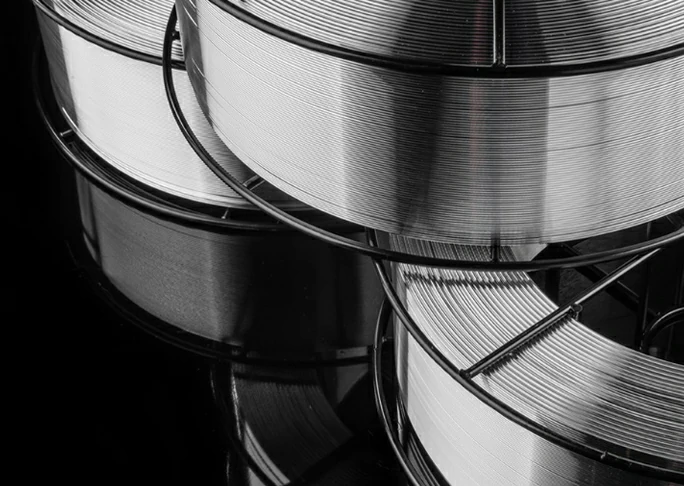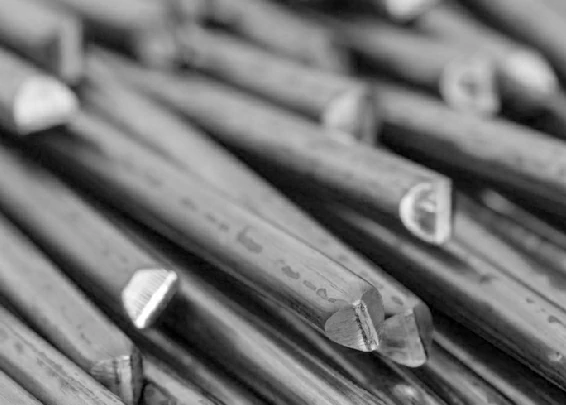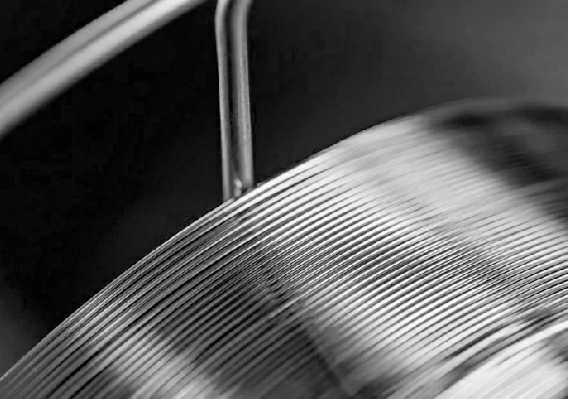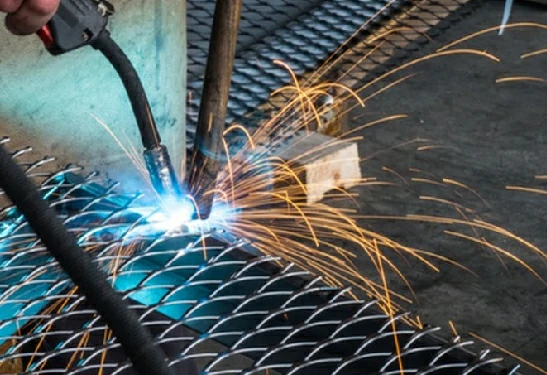In the field of sheet metal fabrication, MIG welding is widely used for the connection of stainless steel materials due to its efficient, stable, and high-quality welding characteristics. Through this guide, gain a deeper understanding of the application techniques of stainless steel welding wires in MIG welding, in order to better improve welding quality and optimize production efficiency.
Introduction to Stainless Steel Welding Wire

Stainless steel welding wire is a type of filler metal used in the process of welding stainless steel components. It is typically made from austenitic stainless steel alloys such as 304 stainless steel, 316 stainless steel, and 308 stainless steel grades. Essentially, it is a thin and continuous metal wire utilized through various welding techniques to facilitate the joining of stainless steel components, with MIG welding being one of the most common methods.
Types of Stainless Steel Welding Wire
Stainless steel welding wires come in various grades, each tailored for specific applications and environments. Stainless steel welding wire is mainly divided into two major categories: solid core stainless steel welding wire and flux-cored stainless steel welding wire.
Solid Core Stainless Steel Welding Wire

Solid core stainless steel welding wire can be used for both MIG welding and submerged arc welding. In MIG welding, the chemical composition of the welding wire is similar to TIG welding wire. However, for certain stainless steel grades, there are specific types of MIG welding wires, such as ER308Si and ER309Si wires with higher silicon content. These wires reduce the surface tension of the molten metal droplets, making the droplet particles finer and facilitating smoother transfer, thus resulting in a more stable arc. Additionally, they improve the wetting of the molten metal, resulting in aesthetically pleasing weld ripples and reduced welding defects.
Flux-Cored Stainless Steel Welding Wire

Flux cored stainless steel welding wire can be used for simple and efficient welding of stainless steel, similar to carbon steel and low alloy steel flux cored welding wire, with MAG welding being the main application. The addition of arc stabilizer to the flux cored welding wire increases the welding current density and makes the arc more stable, thereby improving the welding process. In addition, the deposition speed of flux cored welding wire is high, making it easy to achieve semi-automatic or automated welding, significantly improving welding production efficiency.
In addition to these two major categories, stainless steel welding wire can also be subdivided according to material and purpose. For example, conventional stainless steel welding wires mainly include 304, 304L, 316, 316L, etc. These wires have good corrosion resistance and ductility, suitable for welding stainless steel products, chemical and food equipment, etc. Special stainless steel welding wires include 904L, 347L, etc., which are suitable for welding work with special requirements.
Stainless Steel Welding Wire Grade and Model Comparison Chart
Table 1: Stainless steel welding wire grade and model comparison Chart.Here are some common models and grades
| Stainless Steel Welding Wire Grade | Corresponding Wire Model | Application |
|---|---|---|
| ER308 | H08Cr21Ni10Si | Welding of 304 stainless steel |
| ER308L | 304L | Welding of 304 stainless steel |
| ER321 | HO8Cr19Ni10Ti | Welding of 1Cr18Ni9Ti or OCr18Ni11Ti stainless steel |
| ER316 | H08Cr19Ni12Mo2Si | Welding of 316 stainless steel |
| ER316L | 316L | Welding of 316 stainless steel |
| ER309 | H12Cr24Ni13Si | Welding of dissimilar steels |
| ER309L | H03Cr24Ni13Si | Welding of dissimilar steels (ultra-low carbon) |
| ER2209 | H022Cr22Ni5Mo3N | Welding of 2205 duplex stainless steel |
| ER310 | H12Cr26Ni21Si | Welding of 310S stainless steel |
Advantages of Stainless Steel Welding Wire
The advantages of stainless steel welding wire are mainly reflected in the following aspects:
1.Excellent Corrosion Resistance
Stainless steel welding wire, made from stainless steel materials, exhibits excellent corrosion resistance in harsh environments such as high temperatures and acidic or alkaline conditions. It can effectively resist oxidation, acid corrosion, and other corrosive effects.
2.Versatile Adaptability
Both solid-core and flux-core welding wires can meet the welding requirements of various steel materials. Particularly, flux-core welding wires can conveniently provide the required chemical composition of weld seams by adjusting the components and proportions of the flux, thus meeting various complex welding demands.
3.Fast Deposition Rate, High Production Efficiency
Compared to other welding materials, stainless steel welding wire has a faster deposition rate, with a deposition efficiency of about 85% to 90%, resulting in production efficiency approximately 3 to 5 times higher than that of electrode arc welding.
4.Wide Application
Stainless steel welding wire finds extensive applications in multiple industries such as construction, manufacturing, automotive, shipbuilding, medical equipment manufacturing, chemical, and energy. It is suitable for welding various stainless steel materials including austenitic stainless steel, ferritic stainless steel, and others.
Although stainless steel welding wire possesses many advantages during the welding process, it also has some potential drawbacks. Here are some common disadvantages of stainless steel welding wire:
- High Cost: Due to the special materials and manufacturing processes involved, stainless steel welding wire typically comes at a higher price. This increases the welding costs and may pose a challenge for projects with limited budgets.
- High Demands on Welding Skills: Welding with stainless steel welding wire requires a certain level of technical proficiency and experience. Incorrect welding parameters, improper handling, or unfavorable welding environments can lead to decreased welding quality and the occurrence of defects such as porosity and cracks.
- Prone to Spatter: Stainless steel welding wire may sometimes generate spatter during the welding process. Spatter not only affects the aesthetic appearance of the weld seam but can also cause environmental pollution and even pose safety hazards to the operators.
Applications of Stainless Steel Welding Wire in MIG Welding
The application of stainless steel welding wire in MIG welding mainly manifests in the following aspects:
1.Optimization of Weld Seam Quality
Stainless steel welding wire, when used in MIG welding processes, can produce high-quality weld seams. By adjusting welding parameters and wire composition, it’s possible to achieve smooth, uniform, and aesthetically pleasing weld seams while reducing welding defects such as cracks, slag inclusions, and porosity.

2.Improvement in Wetting Behavior of Deposited Metal
In MIG welding, stainless steel welding wire with increased Si content (such as ER308Si, ER309Si, etc.) can enhance the wetting behavior of the deposited metal, resulting in more aesthetically pleasing weld ripples. This not only improves the appearance quality of weld seams but also helps prevent defects such as incomplete penetration and slag inclusions.
3.Enhanced Arc Stability
The composition design of stainless steel welding wire helps reduce the surface tension of the molten droplets, resulting in finer droplet particles and thus stabilizing the arc. A stable arc reduces spattering and smoke during welding, thereby improving welding efficiency and quality.
4.Selection of Shielding Gas
Commonly used shielding gases for stainless steel welding wire include pure argon or a mixture of argon with other gases (such as Ar+5%CO2+2%O2). These shielding gases help prevent oxidation and other chemical reactions during welding, stabilize the arc, and improve weld seam formation.
Conclusion
Stainless steel welding wire has now become a universal and indispensable consumable in MIG welding, providing countless benefits in different application industries. The excellent corrosion resistance and tensile strength of stainless steel welding wire enable it to perform well in complex environments and special conditions.
FAQ
Yes, stainless steel can be welded using flux core wire.This wire typically contains higher levels of alloying elements like chromium and nickel to match the composition of the stainless steel being welded.
No, while it’s technically possible to use mild steel wire for welding stainless steel, it’s generally not recommended. Mild steel wire doesn’t contain the necessary alloying elements to properly match the composition of stainless steel. As a result, the weld joint may exhibit poor mechanical properties, reduced corrosion resistance, and potential cracking issues.



